Abstract
A rapid analysis of Bacillus thuringiensis strains predictive of insecticidal activity was established by using polymerase chain reaction (PCR) technology. Primers specific to regions of high homology within genes encoding three major classes of B. thuringiensis crystal proteins were used to generate a PCR product profile characteristic of each insecticidal class. Predictions of insecticidal activity were made on the basis of the electrophoretic patterns of the PCR products. Included in the screen were PCR primers specific for cryI, cryIII, and cryIV genes, which are insecticidal for lepidopterans, coleopterans, and dipterans, respectively. Known B. thuringiensis strains as well as unidentified strains isolated from soil and insect cadavers were analyzed by PCR. Small amounts of crude sample lysates were assayed in a single PCR reaction containing 12 to 20 primers capable of distinguishing between the different insecticidal genes. Insecticidal activity predicted by the PCR screen was found to correspond with the insecticidal activity of insect bioassays. In addition to identifying strains with known insecticidal genes, the PCR screen can identify strains with altered electrophoretic patterns containing potentially novel genes.
Full text
PDF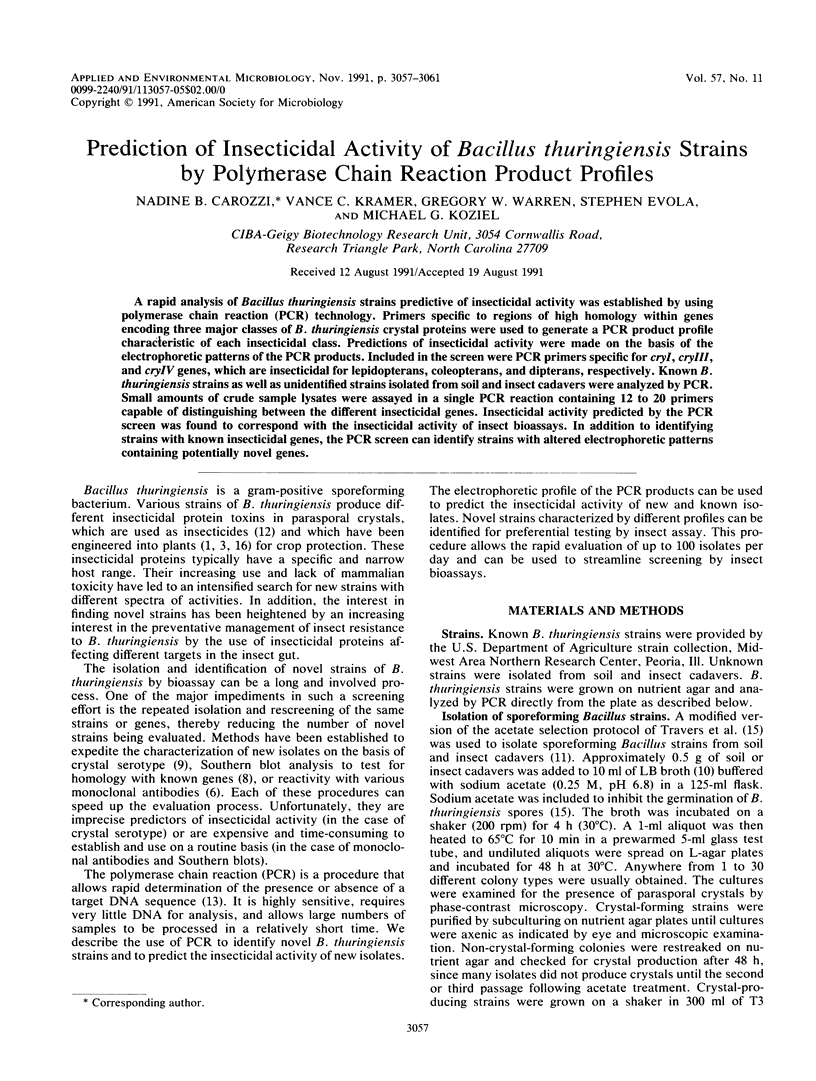
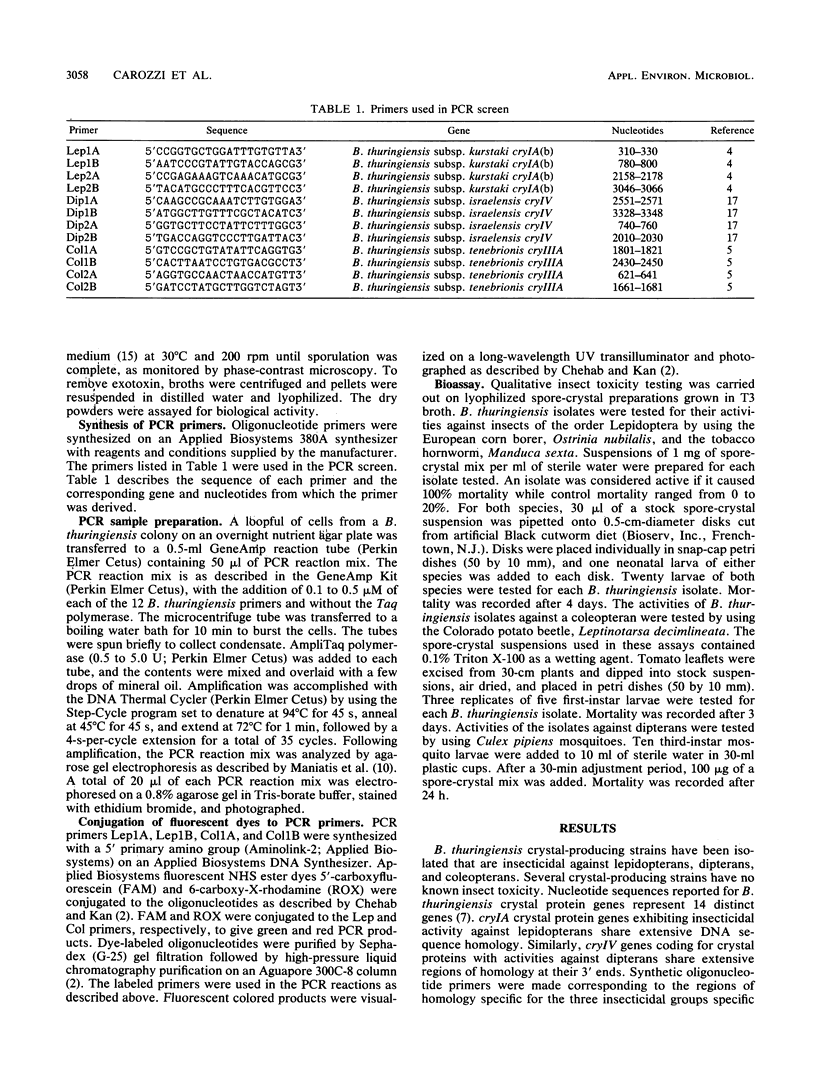
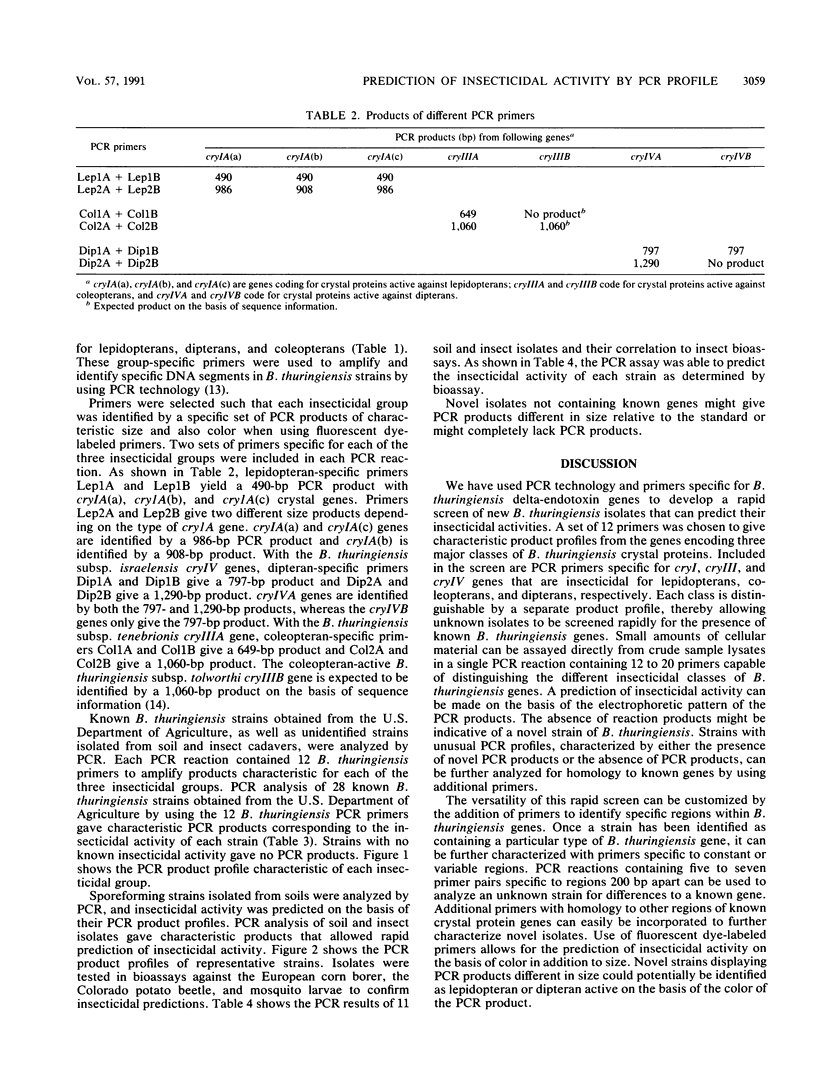
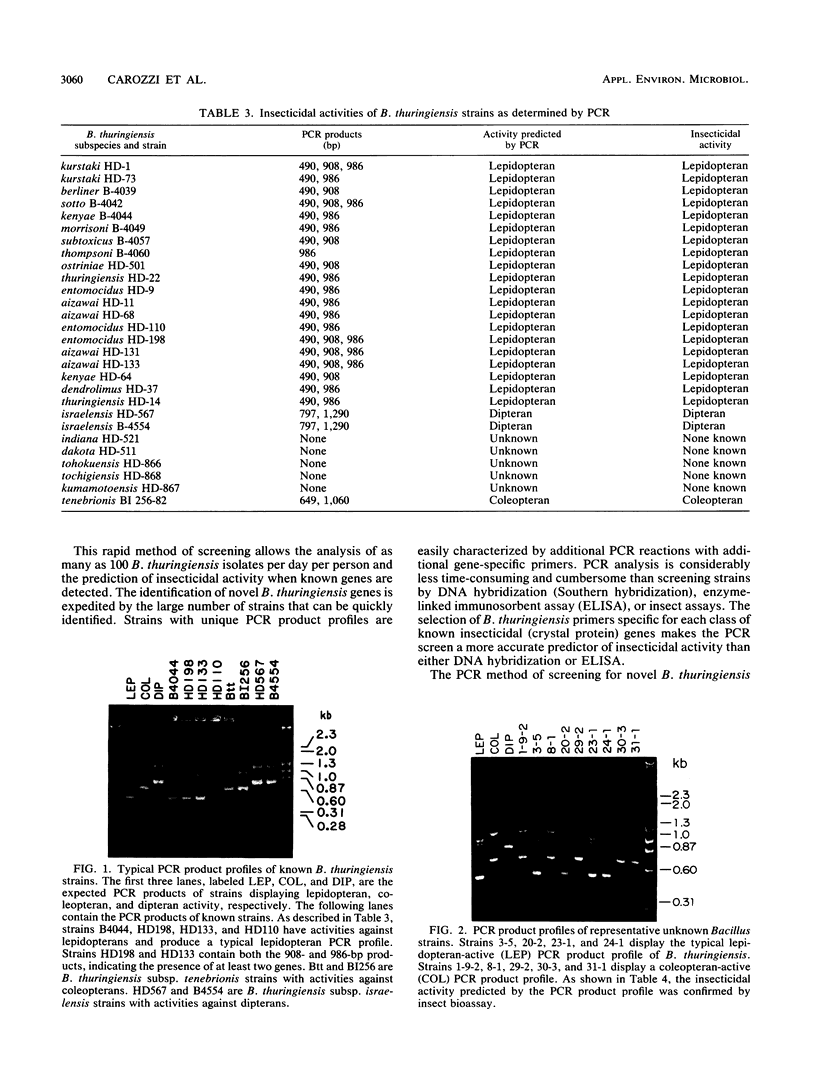
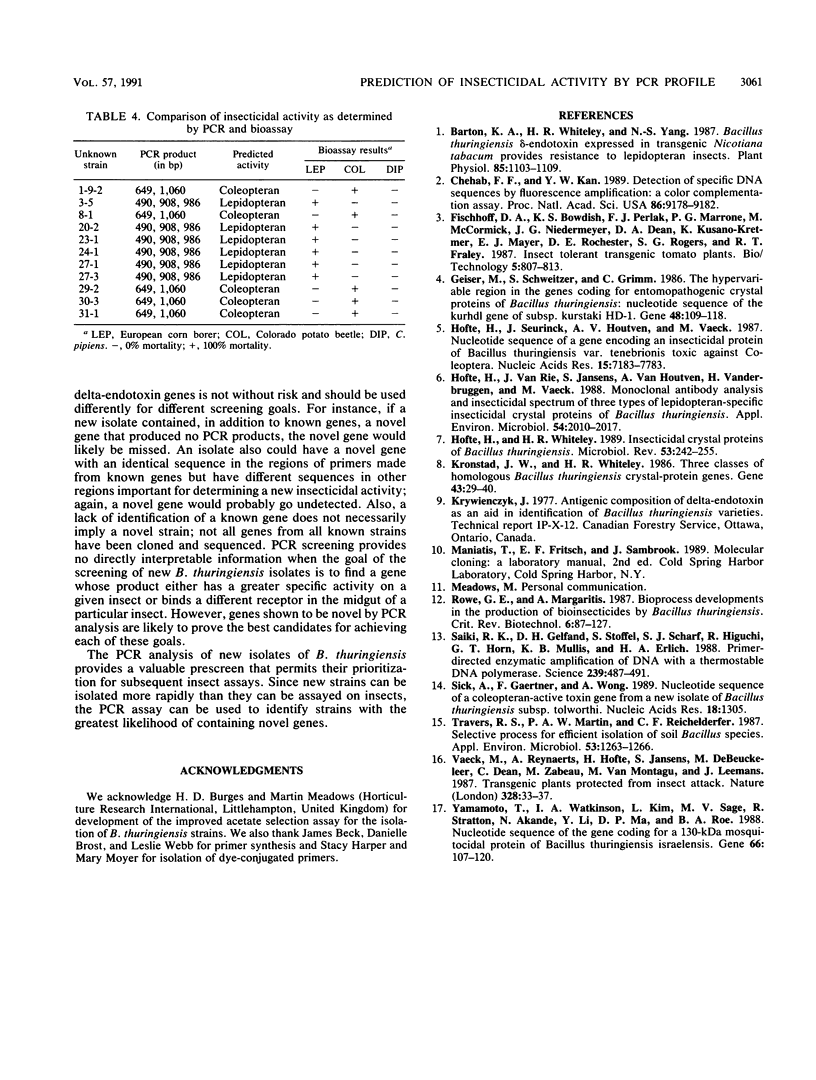
Images in this article
Selected References
These references are in PubMed. This may not be the complete list of references from this article.
- Barton K. A., Whiteley H. R., Yang N. S. Bacillus thuringiensis section sign-Endotoxin Expressed in Transgenic Nicotiana tabacum Provides Resistance to Lepidopteran Insects. Plant Physiol. 1987 Dec;85(4):1103–1109. doi: 10.1104/pp.85.4.1103. [DOI] [PMC free article] [PubMed] [Google Scholar]
- Chehab F. F., Kan Y. W. Detection of specific DNA sequences by fluorescence amplification: a color complementation assay. Proc Natl Acad Sci U S A. 1989 Dec;86(23):9178–9182. doi: 10.1073/pnas.86.23.9178. [DOI] [PMC free article] [PubMed] [Google Scholar]
- Geiser M., Schweitzer S., Grimm C. The hypervariable region in the genes coding for entomopathogenic crystal proteins of Bacillus thuringiensis: nucleotide sequence of the kurhd1 gene of subsp. kurstaki HD1. Gene. 1986;48(1):109–118. doi: 10.1016/0378-1119(86)90357-4. [DOI] [PubMed] [Google Scholar]
- Höfte H., Seurinck J., Van Houtven A., Vaeck M. Nucleotide sequence of a gene encoding an insecticidal protein of Bacillus thuringiensis var. tenebrionis toxic against Coleoptera. Nucleic Acids Res. 1987 Sep 11;15(17):7183–7183. doi: 10.1093/nar/15.17.7183. [DOI] [PMC free article] [PubMed] [Google Scholar]
- Höfte H., Van Rie J., Jansens S., Van Houtven A., Vanderbruggen H., Vaeck M. Monoclonal Antibody Analysis and Insecticidal Spectrum of Three Types of Lepidopteran-Specific Insecticidal Crystal Proteins of Bacillus thuringiensis. Appl Environ Microbiol. 1988 Aug;54(8):2010–2017. doi: 10.1128/aem.54.8.2010-2017.1988. [DOI] [PMC free article] [PubMed] [Google Scholar]
- Höfte H., Whiteley H. R. Insecticidal crystal proteins of Bacillus thuringiensis. Microbiol Rev. 1989 Jun;53(2):242–255. doi: 10.1128/mr.53.2.242-255.1989. [DOI] [PMC free article] [PubMed] [Google Scholar]
- Kronstad J. W., Whiteley H. R. Three classes of homologous Bacillus thuringiensis crystal-protein genes. Gene. 1986;43(1-2):29–40. doi: 10.1016/0378-1119(86)90005-3. [DOI] [PubMed] [Google Scholar]
- Saiki R. K., Gelfand D. H., Stoffel S., Scharf S. J., Higuchi R., Horn G. T., Mullis K. B., Erlich H. A. Primer-directed enzymatic amplification of DNA with a thermostable DNA polymerase. Science. 1988 Jan 29;239(4839):487–491. doi: 10.1126/science.2448875. [DOI] [PubMed] [Google Scholar]
- Sick A., Gaertner F., Wong A. Nucleotide sequence of a coleopteran-active toxin gene from a new isolate of Bacillus thuringiensis subsp. tolworthi. Nucleic Acids Res. 1990 Mar 11;18(5):1305–1305. doi: 10.1093/nar/18.5.1305. [DOI] [PMC free article] [PubMed] [Google Scholar]
- Travers R. S., Martin P. A., Reichelderfer C. F. Selective Process for Efficient Isolation of Soil Bacillus spp. Appl Environ Microbiol. 1987 Jun;53(6):1263–1266. doi: 10.1128/aem.53.6.1263-1266.1987. [DOI] [PMC free article] [PubMed] [Google Scholar]
- Yamamoto T., Watkinson I. A., Kim L., Sage M. V., Stratton R., Akande N., Li Y., Ma D. P., Roe B. A. Nucleotide sequence of the gene coding for a 130-kDa mosquitocidal protein of Bacillus thuringiensis israelensis. Gene. 1988 Jun 15;66(1):107–120. doi: 10.1016/0378-1119(88)90229-6. [DOI] [PubMed] [Google Scholar]




